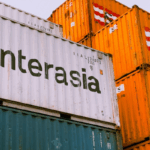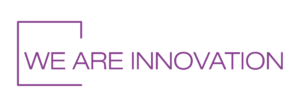If there’s one thing Estonia clearly does much better than most European countries, it’s turning bureaucracy into a non-event. While many countries are still drowning in paperwork and rubber stamps, Estonia simply logged on and stayed online.
With 100% of government services now digital, Estonia has built a state where showing up at an office is the exception rather than the norm. What’s even more impressive? They started in the 90s. Out of the Soviet collapse, they made something exceptional: a digitally native government.
When Estonia regained independence, it had limited resources and a budget. The country had no choice but to create efficient and impactful public sector initiatives. Instead of building slow, expensive systems from scratch, they decided to leapfrog. That leap? Digital-first governance. Today, the e-Estonia initiative is a fully functional ecosystem that powers everything from starting a business to booking a parking spot.
Let’s rewind to 1996. Estonia launched Tiigrihüpe, or Tiger Leap — a national programme to digitize schools and expand internet access. As a result, Estonia became a country where 99% of the population uses the internet regularly. That same year, Estonia rolled out its e-cabinet, introducing paperless government meetings in the ’90s, and e-banking, giving citizens 24/7 access to their finances from home. Ahead of its time? Absolutely.
But they didn’t stop at online meetings and bank transfers.
By 2000, Estonians could file taxes through e-Tax — a service now used by 98% of the population. They also launched M-Parking, letting people pay for parking via SMS. And in 2001, X-Road came online. The platform is a secure backbone that allows public and private sector databases to talk to each other. Think less duplication, more efficiency.
Then came the power moves:
- 2002: E-ID cards and digital signatures go live
- 2005: Estonia becomes the first country in the world to offer internet voting
- 2007: B2B e-invoices replace messy paper trails
- 2019: Estonia mandates business-to-government electronic invoices.
No more waiting rooms, no more scanning documents, and definitely no more standing in line to vote. Estonia didn’t just digitalize government, but redefined it. And the best part? They’re showing the rest of us what’s possible when innovation meets political will. As a Ukrainian, I’m watching Estonia closely because we’re not far behind.
Estonia is the country whose experience Ukraine studied to build a digital state. In fact, today Ukraine is following the same path that Estonia began two decades ago.
The two major differences, however, are the changes in user interface and focus on mobile devices, which were driven by technological developments and people’s needs plus a major shift in culture.
For example, Ukraine introduced Diia, the digital government mobile app, that has quickly become a staple in everyday life. Post release, over 21.8 million users have registered, with services ranging from e-passports to business registration, all in one place. During wartime, it also became a humanitarian lifeline: more than 2.7 million people applied for aid via the app in just a week at the height of the war.
The digital transformation of the state from scratch since 2019 allows us to present this culture much better, as for Estonia it was a long, slower, more bureaucratic path, filled with slow habits. The signing of the memorandum in 2022 launched a new stage of cooperation between the two digital states. Estonia studied Ukraine’s experience in building a state in a smartphone and implementing a mobile-first approach. Thus, Ukraine shared with Estonian colleagues the experience of implementing Diia, working together in technical teams. This is the first case of such interaction between Ukraine and another country.
The creation of the Digital Coalition has given a start to the development and strengthening of cooperation in the areas of digitalization, e-government, artificial intelligence and open data. In addition, bilateral cooperation in the cyber direction, exchange of information on cyber threats and the international format “Tallinn Mechanism” are actively developing.
The experience of the work and development of the Diia allowed Estonia to accelerate the development of the pilot version of the mRiik application. Before that, all public services in Estonia were available only in web format. The pilot was successful, and Estonian colleagues were convinced of the need to create an application for simple and convenient interaction of citizens with the state.
While piloting the mRiik app, Estonia discovered something bigger: a new direction in its digital transformation journey — personalized government. The idea? Move beyond one-size-fits-all services and create a digital state that adapts to the individual. And here’s where Ukraine comes in.
Estonia is continuing to build mRiik by drawing on lessons learned through collaboration with Ukraine, especially from Diia. They’re working through legal hurdles to recognize digital documents and adapting several tools that first took shape in the Ukrainian context. It’s a clear sign: innovation doesn’t happen in silos — it’s shared, borrowed, and reimagined.
This model of cross-border collaboration is already catching on. In 2023, Ukraine’s Ministry of Digital Transformation, Estonia’s Ministry of Economic Affairs and Communications, and the UK’s Foreign Office signed their first trilateral memorandum on digital cooperation, sharing the vote of confidence in the future of interoperable, citizen-focused digital states.
For many governments, digital transformation is associated with risks. The European Union is quite fond of regulating technology and is very uncomfortable when it comes to something uncertain. But, paying a lot of attention to risks, people do not spend enough time on what is no less important — new opportunities, investments, innovations.
What the EU needs to take from Estonia and Ukraine is simple: innovation doesn’t happen when you over-regulate it out of existence. It happens when governments treat tech not as a threat to be contained, but as a tool to serve people better.
Estonia got there by building trust and infrastructure. Ukraine did it by designing fast, iterating faster, and listening to what citizens actually needed. If the EU wants to move from talk to leadership in digital governance, it has to stop overthinking and start co-creating with startups, technologists, and the people on the ground who are done waiting in line.
* Tetiana Rak is the COO of We Are Innovation. A journalist and freedom activist with eight years of experience, Tania has worked with renowned media outlets such as CNN, TechCrunch, Fox News, HackerNoon, BBC and Radio Free Europe, among others. Her commitment to promoting technological innovation and global digital transformation has earned her an outstanding reputation in the industry. Scarred by the experience of war in Ukraine, Tania champions the advancement of technology as a key tool to drive freedom, allowing people to speak, act and pursue their happiness without unnecessary external constraints.
Source: We Are Innovation











